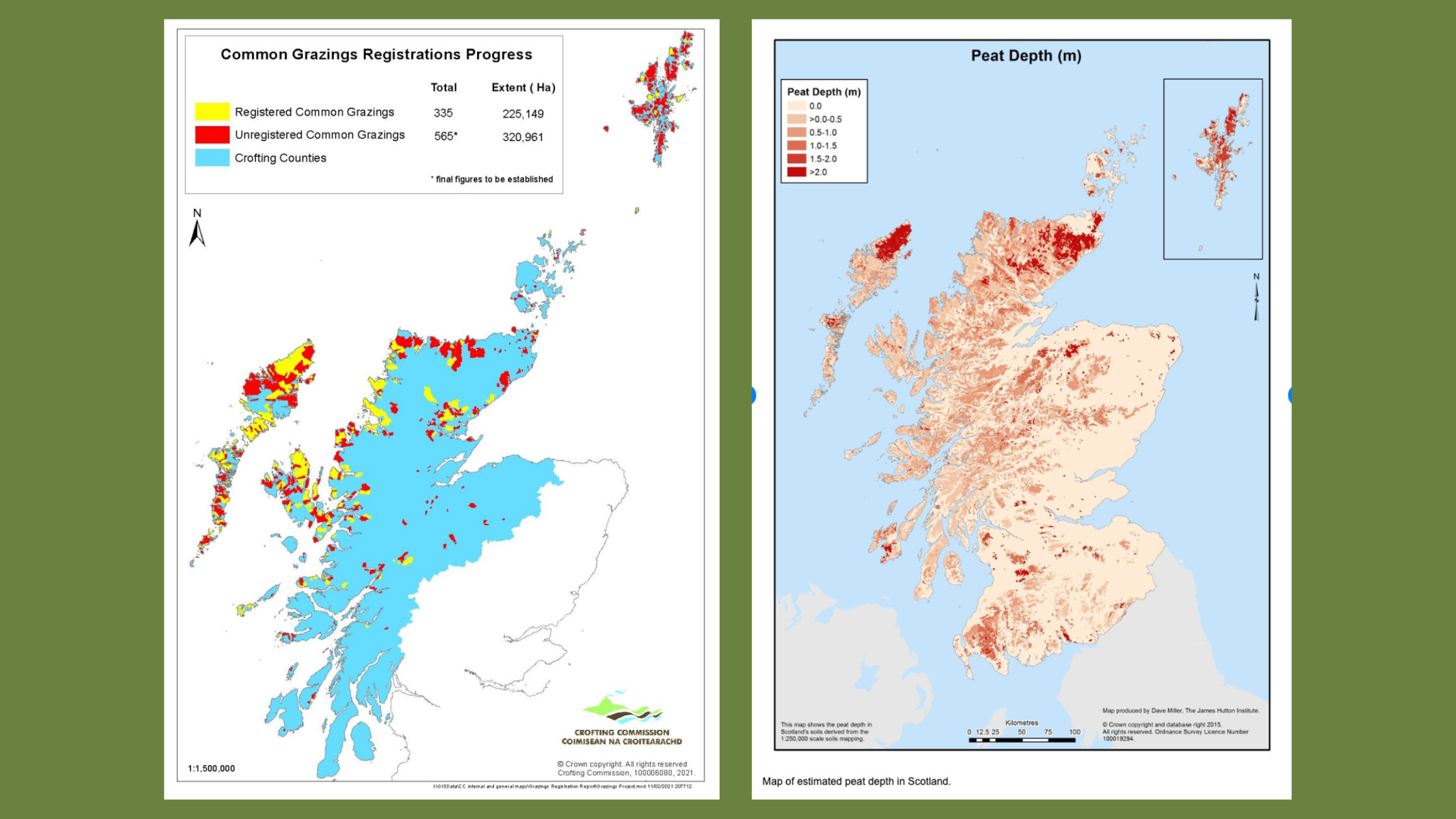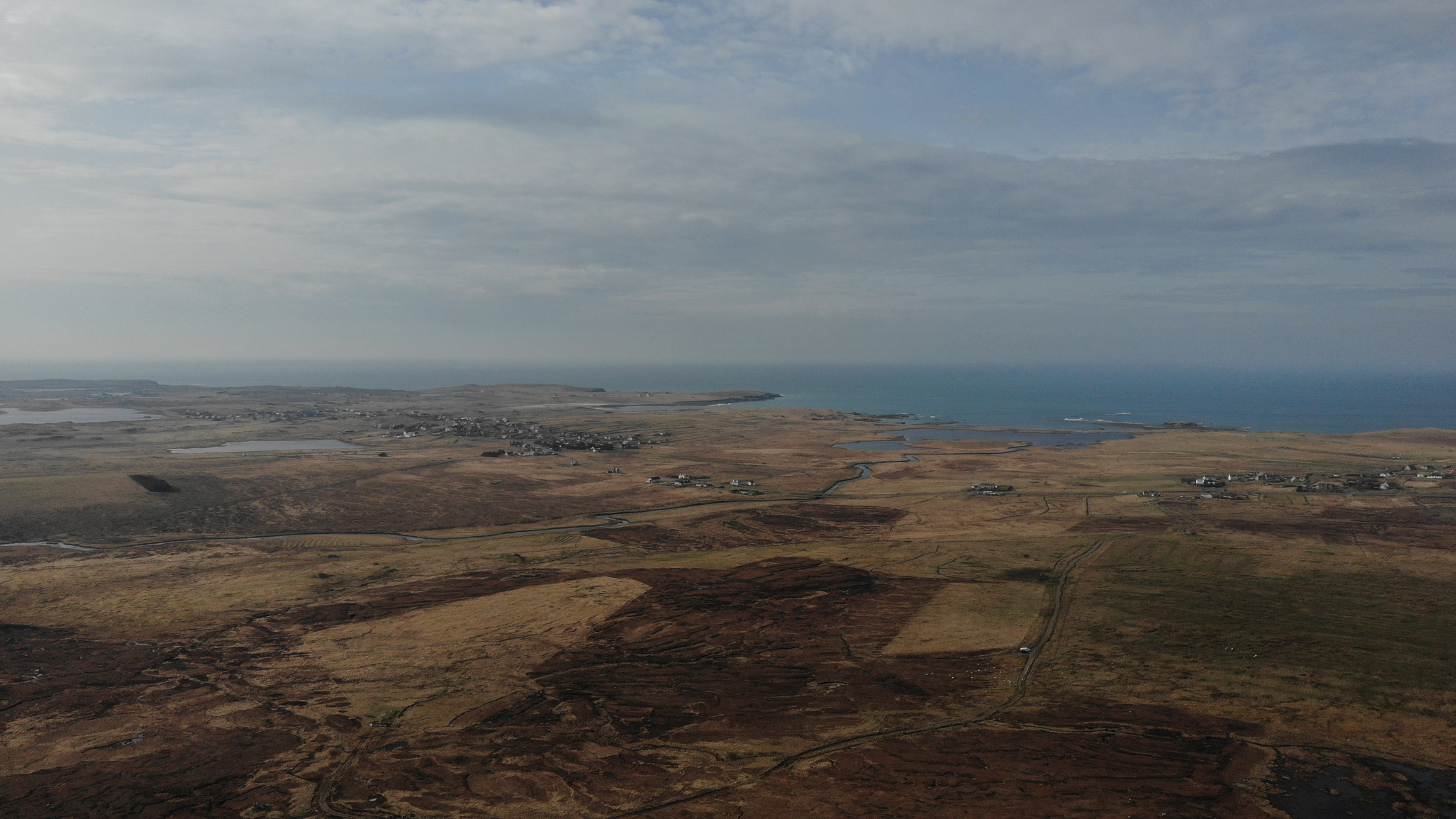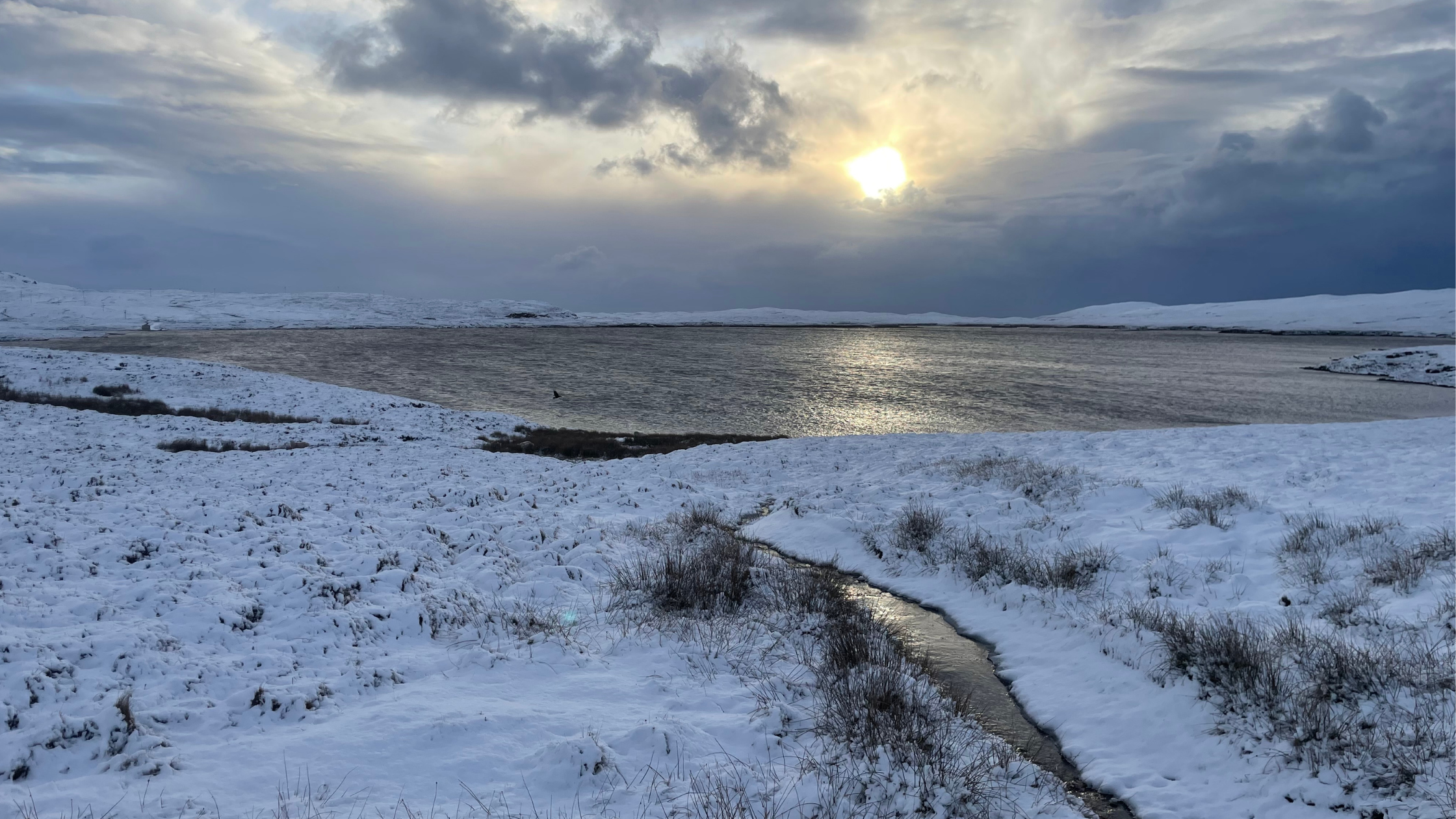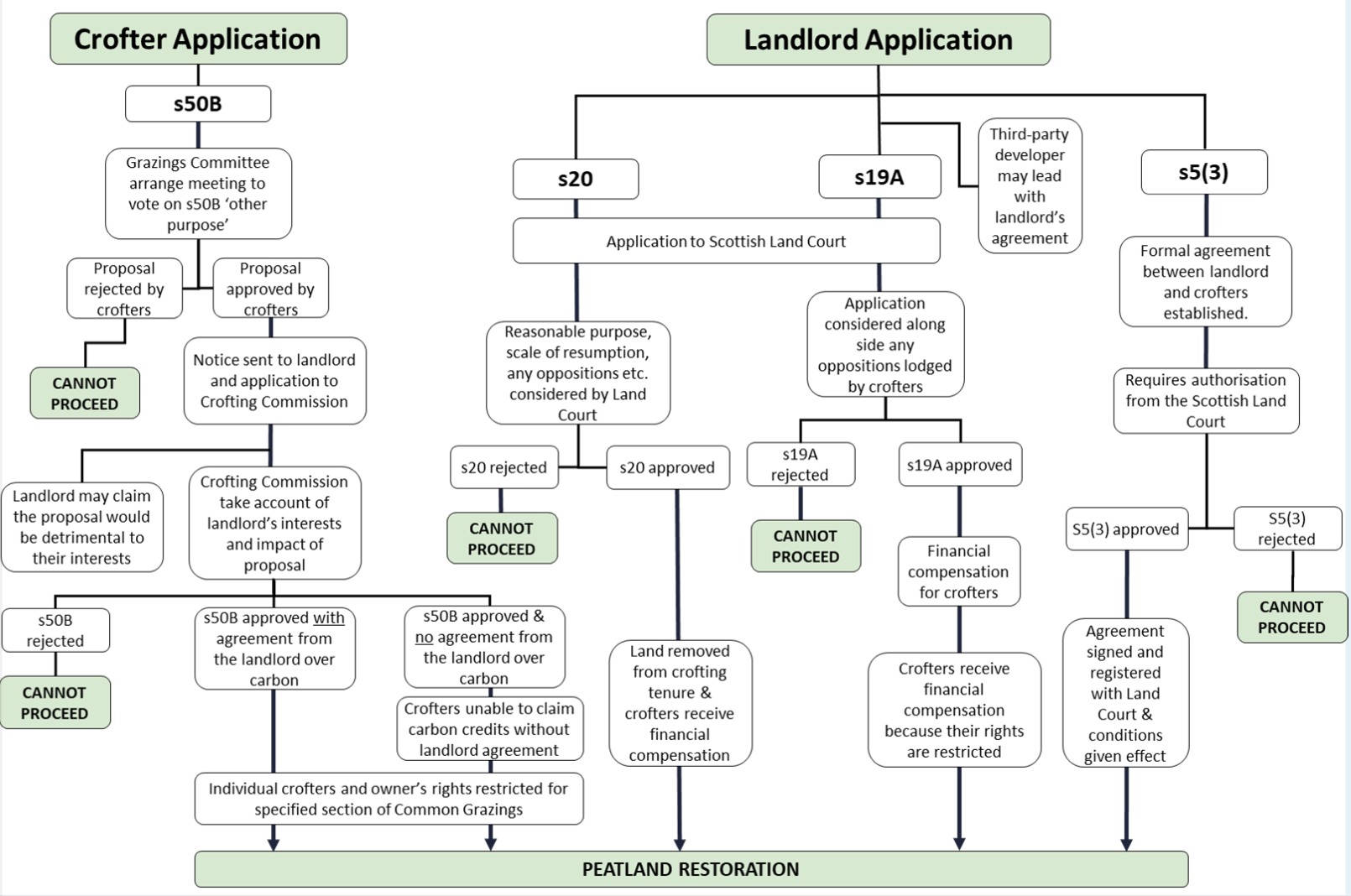A summary of the FIRNS-funded project, led by Forest Carbon
In March 2024, the FIRNS (Facility for Investment Ready Nature in Scotland) project led by Forest Carbon, in collaboration with Finance Earth and Angus Davidson Ltd came to an end. This FIRNS project looked at peatland restoration on crofting territories, namely on land that’s subject to common grazing rights and was supported by a development grant provided by NatureScot.
In March we released Part 1 of this article, which covered:
What is common grazing land?
What is the objective of these projects?
What difference will these projects make?
As promised, we are following up with this article (Part 2) to cover the key findings from the final report.
Project context
It is estimated that degraded peatlands in Scotland account for around 15% of Scotland's total net emissions. SRUC estimates peatland covers 348,000 ha of common grazings. To date, there has been limited delivery of peatland restoration projects on crofting and common grazing land.
More context can be found on slide 7 of the final report.
 Image source: Research Gate and Crofting Scotland
Image source: Research Gate and Crofting Scotland
Key project objectives
The key objectives of this Project were as follows:
- Assess the feasibility of developing – to an investment-ready stage – two pilot peatland restoration projects on land subject to common grazing tenure, in alignment with the Scottish Government’s Interim Principles for Responsible Investment in Natural Capital.
Pilot 1: A 378-ha proposed restoration project on Arnol Common Grazings, Isle of Lewis, owned by Barvas Estate Trust. An overview of this project can be found on slide 11 of the final report
Pilot 2: A 141-ha restoration project on Ollaberry, Collafirth, and Crookster Common Grazings, Shetland Islands, owned by Shetland Islands Council. An overview of this project can be found on slide 12 of the final report. Barvas, Isle of Lewis (Pilot 1). Photo by Angus Davidson Ltd.
Barvas, Isle of Lewis (Pilot 1). Photo by Angus Davidson Ltd. Ollaberry, Shetland Islands (Pilot 2). Photo by George Hepburne-Scott.
Ollaberry, Shetland Islands (Pilot 2). Photo by George Hepburne-Scott. - Explore alternative revenue streams aside from public grants, such as carbon credits, biodiversity credits, and water benefits, to fund peatland restoration and generate income for shareholders and landlords. More on alternative revenue streams on slides 13 and 14 of the final report.
- Develop financial models and business cases for the two pilot sites, including various carbon sale strategies (e.g., Pending Issuance Units (PIUs) vs. Peatland Carbon Units (PCUs)). More on this on slides 16 - 20 of the final report.
- Investigate revenue-sharing models and governance/legal arrangements that balance the interests of shareholders and landlords. More on balancing interests on slides 10 and 31 of the final report.
Key findings from the final FIRNS project report and supporting legal paper
Challenges
Lack of clarity causes hesitation on peatland restoration
Landlords and shareholders hesitate to engage in carbon-related activities due to a lack of clarity on several fronts. The main areas of concern are:
A lack of clear guidance on farm carbon accounting and undetermined ‘Net Zero’ requirements
There is insufficient guidance on the accounting of peatland emissions on common grazings, and the inclusion of these emissions in potential Net Zero reporting. This issue is compounded by inconsistencies in farm carbon audit tools, as highlighted by a Defra-funded report produced by RSK ADAS (June 2023). Those managing land need to closely consider current and future landholding emissions before engaging with carbon markets.
It is anticipated there will be growing requirements in the UK to reduce agricultural emissions within the food supply chain, such as Morrison’s ambition to become ‘Net Zero’ by 2030 within the British farms they buy directly from. Farmers need clear and consistent requirements to effectively plan and fund necessary changes, including the likely need to restore degraded peatlands occupied by livestock.Uncertain connections between agricultural support and emissions reductions
The business case for each Pilot project showed potential for carbon revenue generation that could be stacked on top of the existing Agri-Environment Climate Scheme payments and additional income generated by the occupiers from sheep farming.
The Scottish Government stated in June 2023 that in the future at least half of all funding for farming and crofting will be targeted towards outcomes for biodiversity gain and climate mitigation and adaptation. However, crofters require clarity on how they can benefit from these payments and access emerging private nature-based markets for carbon and biodiversity. Clear guidance and consistent policies are essential to support the delivery and long-term management of peatland restoration initiatives.
More on these challenges is covered on slides 21, 25 and 32 the final report.Peatland restoration project funding
Peatland restoration projects are sensitive to changes in funding, needing increased private sector investment to cover public funding constraints. Long commitment periods and risks, such as market and delivery risks associated with selling Peatland Code-certified credits, were raised as potential challenges. The voluntary carbon market is complex and difficult to navigate for those unfamiliar with the sector, with language and terminology acting as barriers.
Further complexity is added in the case of common grazings, which, where regulated, comprise grazings committees and individual shareholders. All individuals need access to the necessary tools and information to participate in decision-making.
There are no standard 'peatland restoration management' agreements currently available for occupiers and landowners. Templates, that could be adapted to reflect the specifics of a site, would help define roles and responsibilities, including contractual obligations under the Peatland Code, carbon sales contracts, and Peatland ACTION grant funding. This would allow all participants involved in the delivery of projects to better understand the associated risks and rewards.
More on peatland restoration funding in slides 8 and 26 of the final report.
Opportunities
We explored two potentially viable governance models for peatland restoration on common grazings
Stakeholder engagement at the two Pilot sites revealed some obstacles for shareholders and landlords in delivering peatland restoration projects and using carbon funding.
Two models were explored:
A shareholder and landlord-led model, where both parties agree on income distribution.
An investor-led model, where an investor finances the project and compensates shareholders and landlords through lease or profit-sharing agreements.
The FIRNS Project identified the investor-led model as a way to transfer certain risks to an investor, allowing landowners and occupiers to delegate restoration and maintenance responsibilities. However, limited awareness and understanding of financing options, along with limited private finance packages (whether this is a lease or joint venture type arrangement), restricts the practicality of this option.
More on the viable governance models we found in slide 10 of the final report.
Legal pathways exist but require cooperation
 Page 9 of the final report
Page 9 of the final report
The final FIRNS report highlights unique challenges in delivering peatland restoration projects on common grazing land, due to an uncertain legal framework for carbon credit ownership and the complexities of the Crofting Act. Harper Macleod's legal review identifies Sections 19A and 50B as the most promising legal pathways for peatland restoration on crofting land.
Pathway 1: Crofter-Led Applications
Section 50B of the Crofters (Scotland) Act 1993 is relevant for crofter-led peatland restoration projects.
Crofters are unlikely to own the carbon without explicit rights being granted by the landlord, limiting their ability to claim carbon credits.
This route is untested and needs to be established with the Crofting Commission as a method for proceeding with peatland restoration, but there is potential for 'crofter application' projects to access rights to carbon through an express agreement from the landlord.
Pathway 2: Landlord-Led Applications
Section 19A ("Scheme for Development") offers the most likely legal route for landlord-led projects.
Requires application to the Scottish Land Court, but has yet to become an established route for proceeding with peatland restoration and if approved would partially restrict crofters' rights with the provision of financial compensation.
This route is not yet established for peatland restoration but shows promise.
In both situations, cooperation between crofters and landlords is essential. Potential legal reforms may offer clarity on the legal pathways. There is further consideration to allow for joint peatland ventures between crofters and landlords, similar to forestry ventures, to facilitate peatland restoration and carbon sequestration.
More on the legal pathways in slide 9 of the final report.
Recommendations for the Scottish Government
The final FIRNS report also presented three key recommendations for the Scottish Government, as follows:
Support the creation of a Scotland Carbon Fund to manage financial and delivery risks while also ensuring a steady income for occupiers and landowners, thereby facilitating the attraction of private investment. The development of such a fund could go some way to unlocking restoration projects by reducing some areas of delivery and price risk.
Help to clarify future net zero obligations and uncertainties in peatland carbon accounting obligations for occupiers and landlords, so that early movers in this market are not penalised.
Ensure dedicated ringfenced funding for projects on crofting tenure land, acknowledging unique delivery challenges.
More on our recommendations in slide 28 of the final report.
Pilot projects’ status and future support
Despite discussions being undertaken with stakeholders across both projects, no formal agreement was reached on a definitive legal pathway for proceeding with restoration. The FIRNS project partners wish to continue to support both Pilots towards identifying a preferred legal pathway and exploring access to a range of funding models.
By way of example, Forest Carbon and Angus Davidson have been asked to present to the Councillors of Shetland Islands Council (one of the FIRNS project stakeholders) in September 2024 as part of ongoing efforts related to the FIRNS project.
Systems map
Following the final report, FIRNS project partners are developing a systems map. This map aims to further the understanding of challenges associated with delivering peatland restoration on crofting tenure land and gather ideas for potential solutions.
Please contact us if you would like a link to the systems map to be shared with you once it is up and running.
Contact details
If you would like to discuss any aspect of the FIRNS project, please feel free to contact:
- George Hepburne Scott – georgehs@forestcarbon.co.uk
- Yann Grandemange – yann@finance.earth
- Angus Davidson – angus@angusdavidsonltd.com
Links to PDF versions of the final FIRNS report and legal paper
You will find the final FIRNS report here, the legal paper here, and evidence review here.
This project is supported by NatureScot through The Facility for Investment Ready Nature in Scotland (FIRNS)

/public/692/dd7/e0c/692dd7e0ca905474952387.jpg)
/public/68f/f39/36d/68ff3936defff352354004.jpg)
/public/68d/a53/023/68da530233e97825782884.jpg)